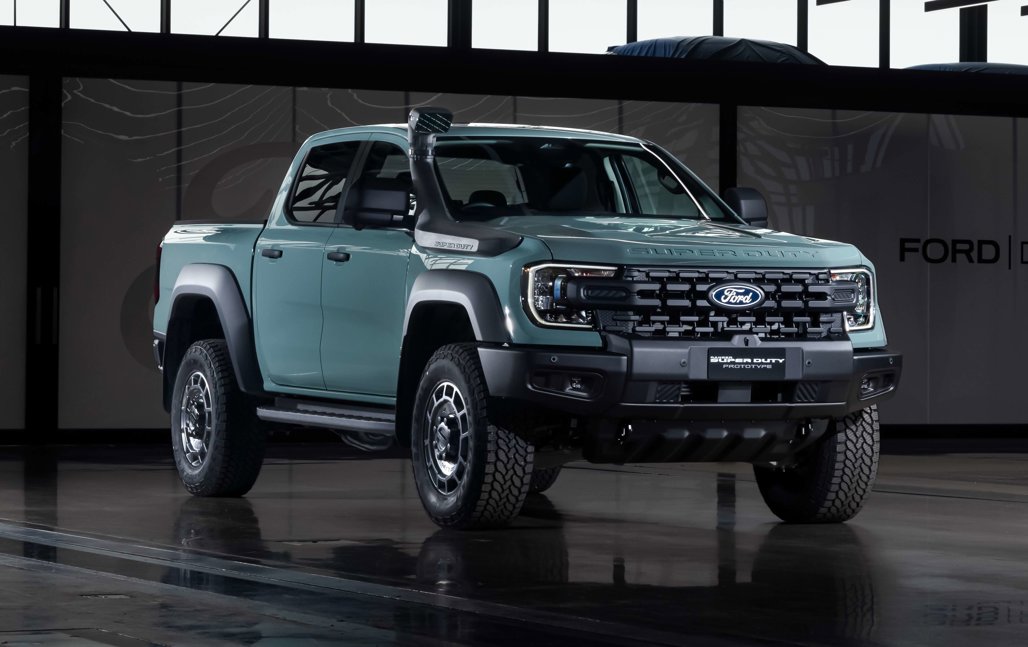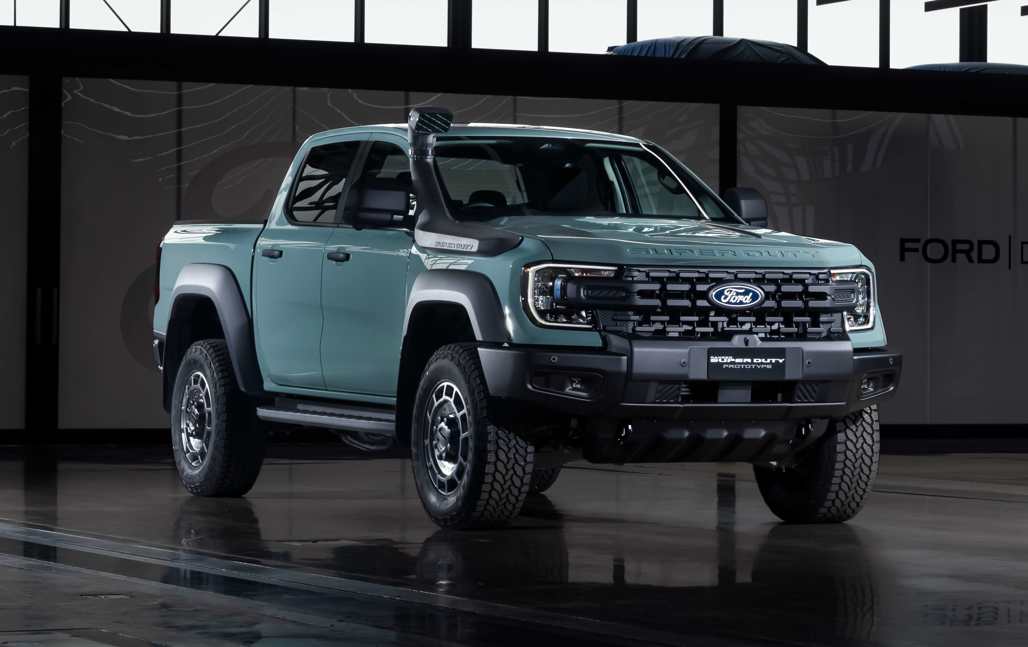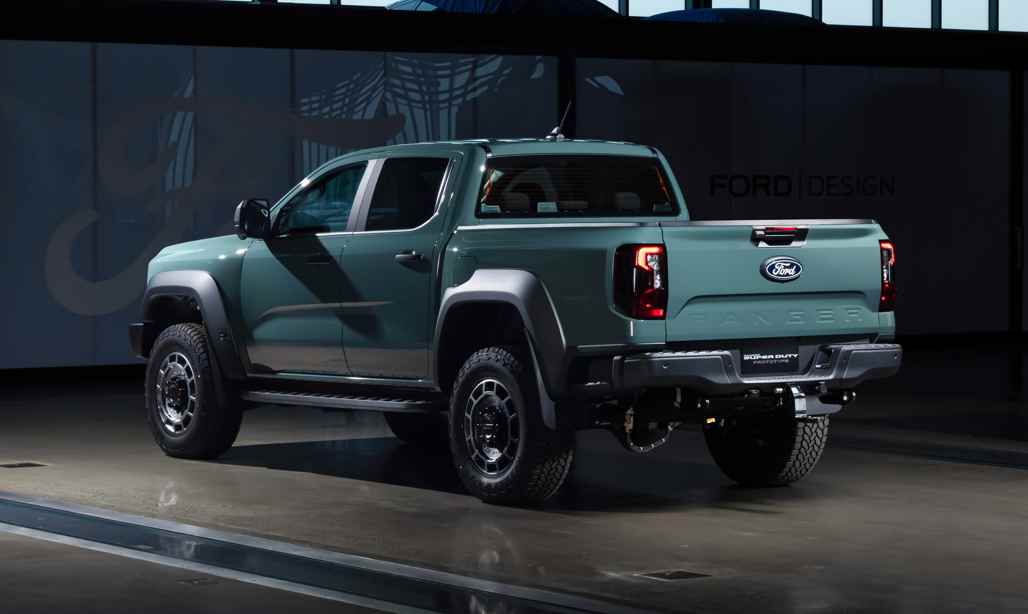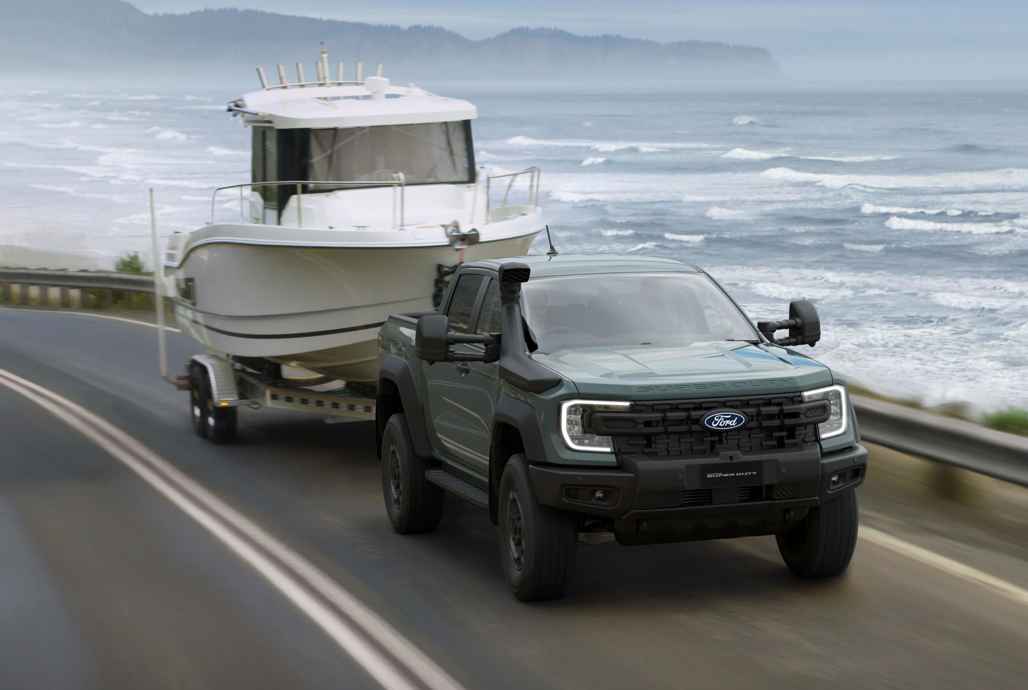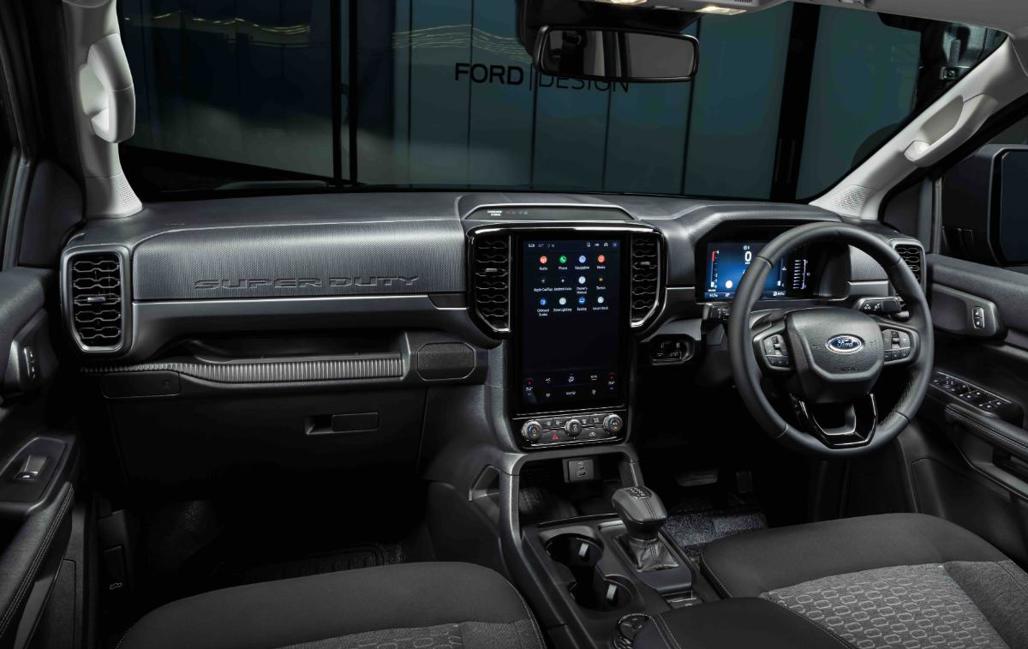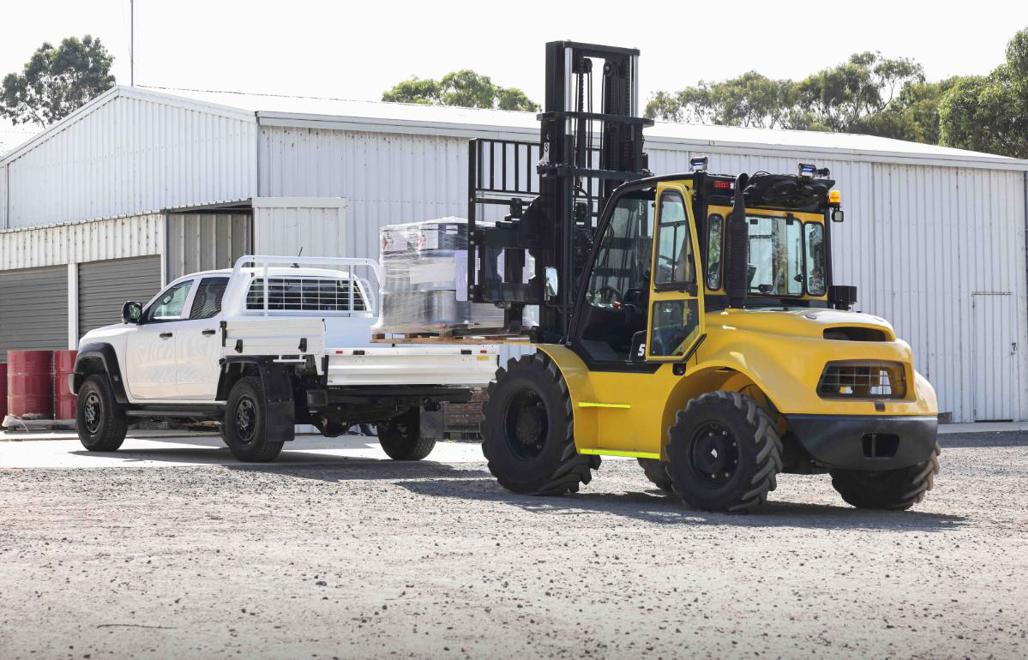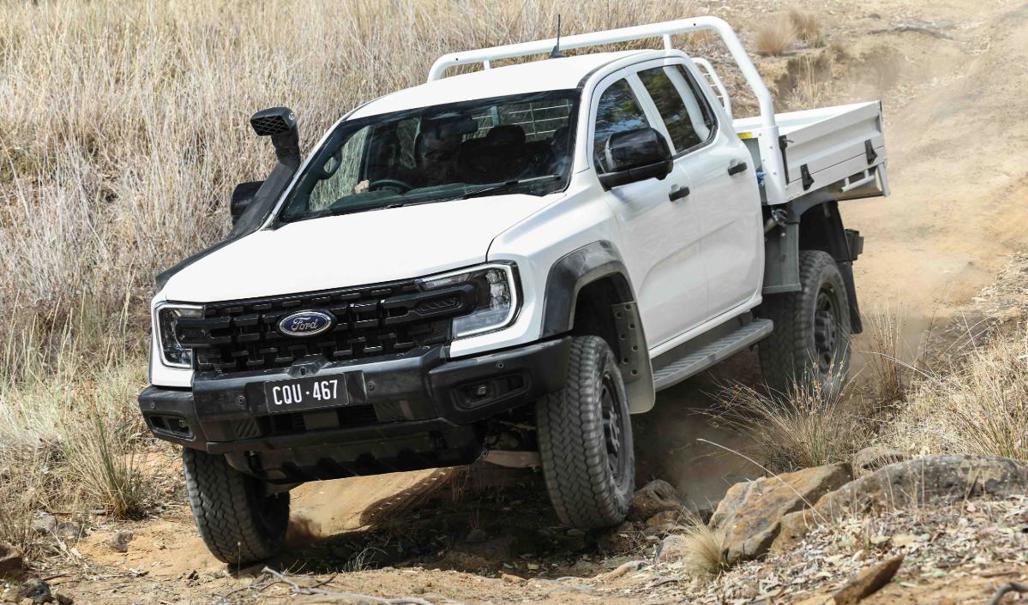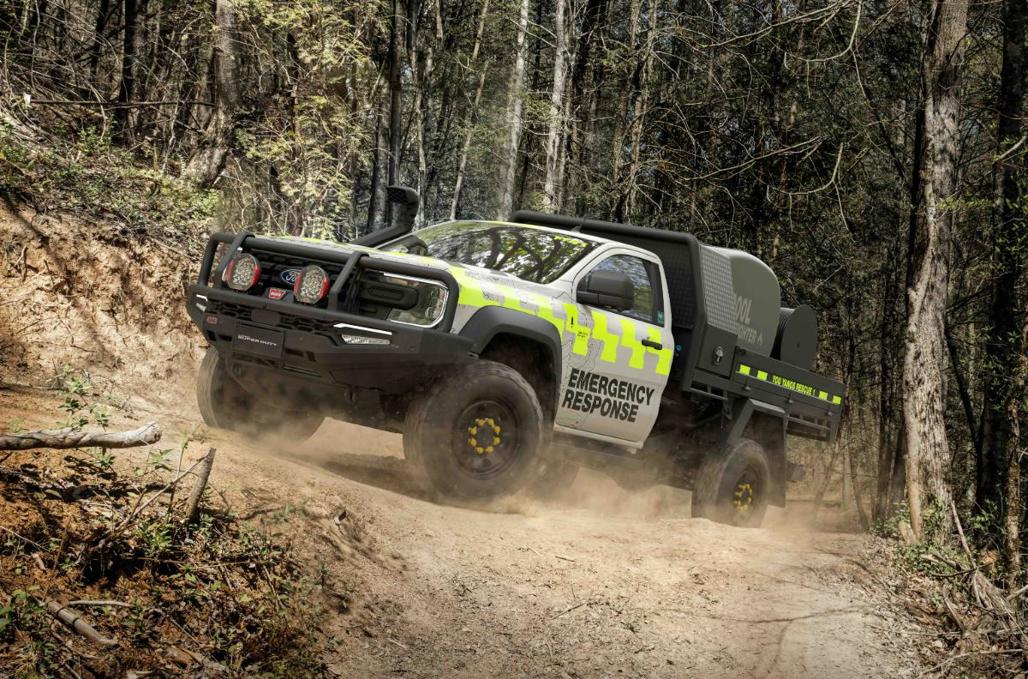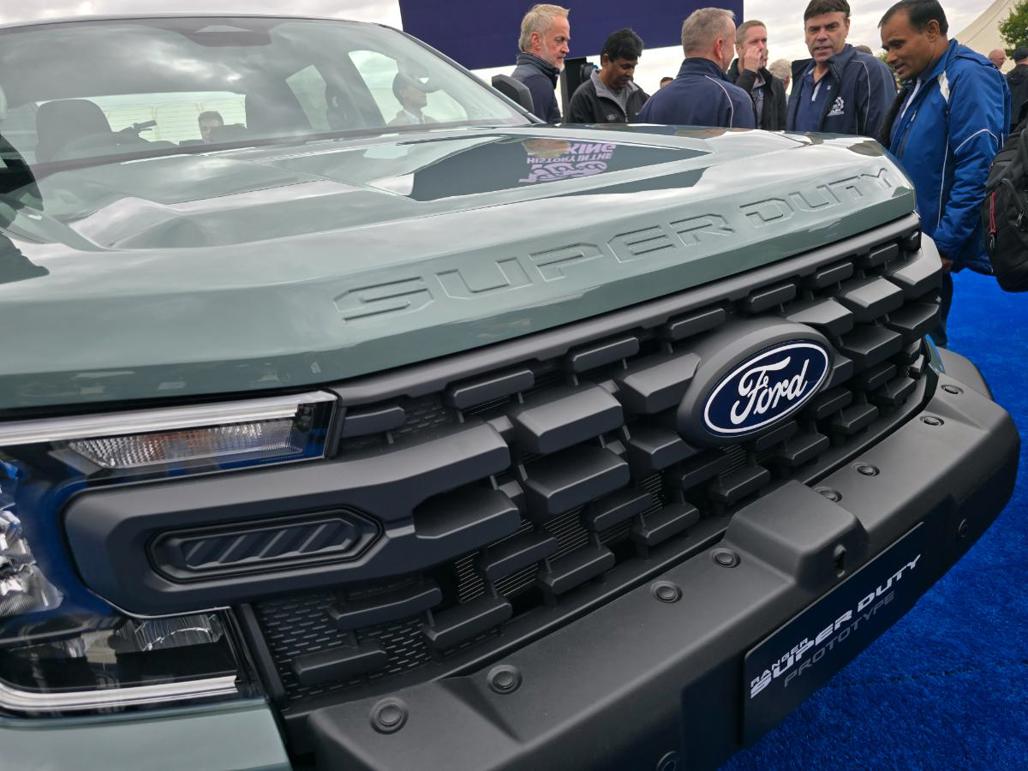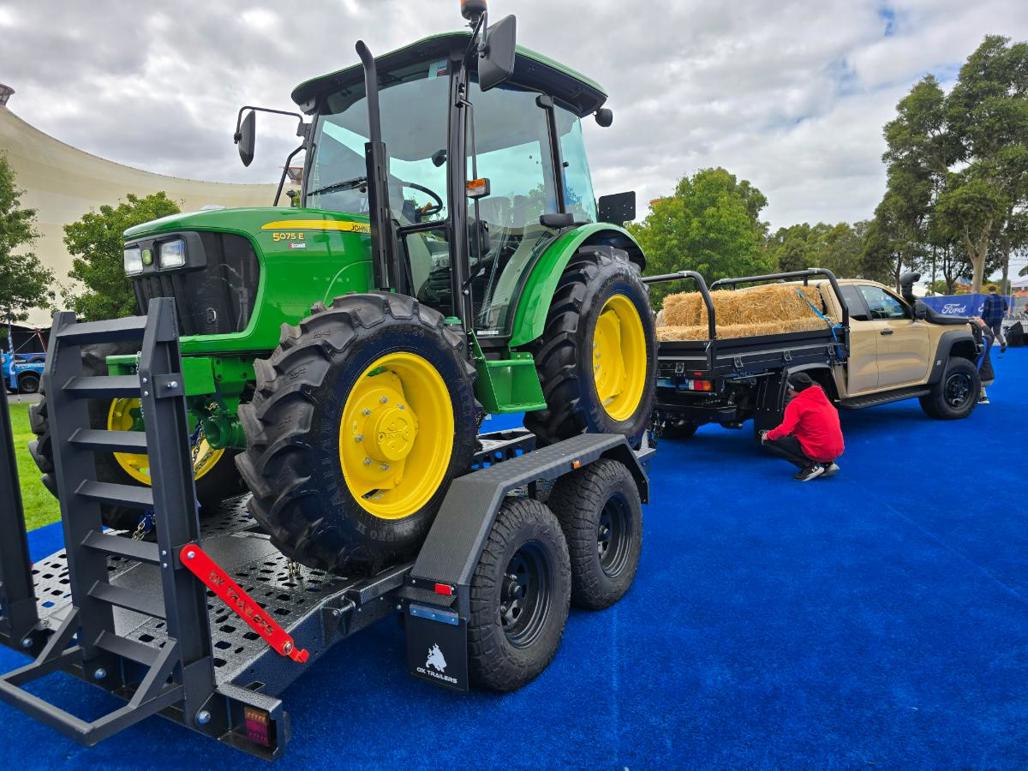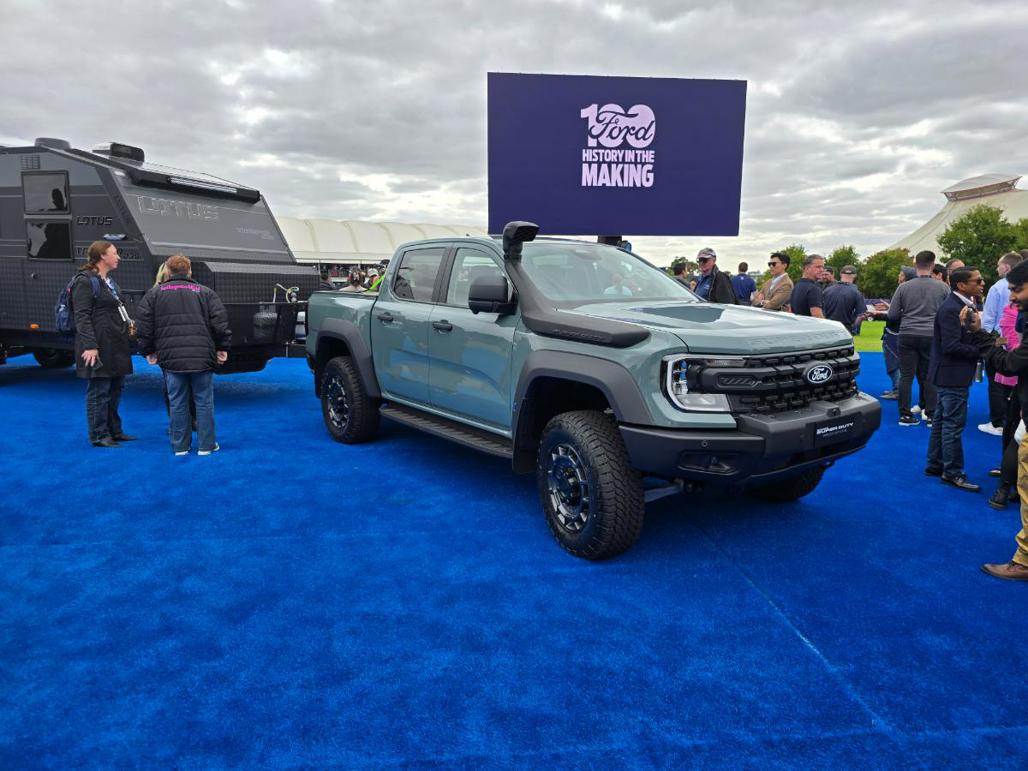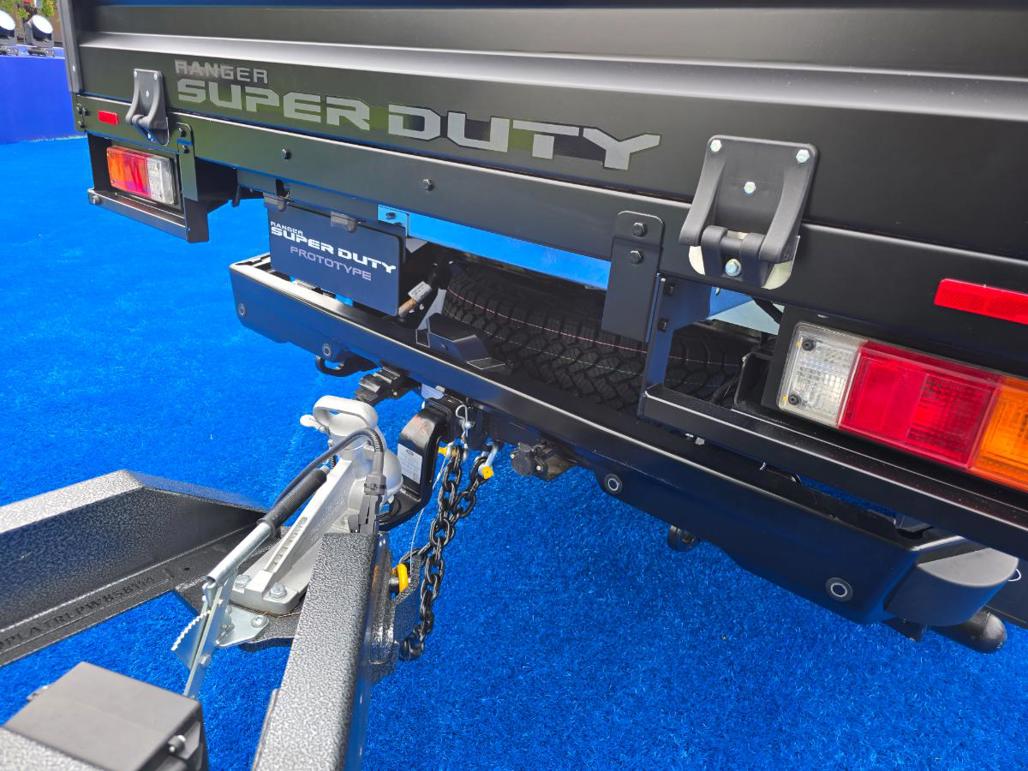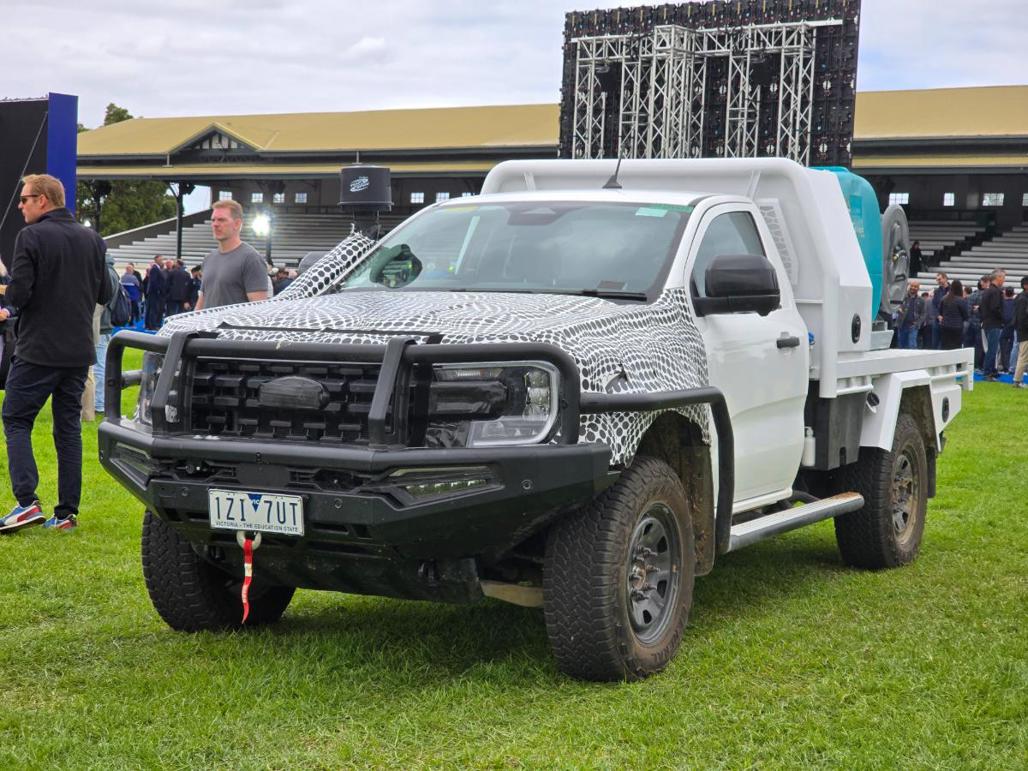One hundred years ago last week the Ford Motor Company of Australia was founded in Geelong (on March 31, 1925, to be precise) and to mark the occasion of its centenary, the company held a celebratory extravaganza for invited guests, dealers and media at the Melbourne Showgrounds.
Featuring a number of high-profile guests, including the current line up of V8 Supercar drivers from all Ford teams, racing legend Dick Johnson and former Wheels magazine editor Peter Robinson, the event was attended by senior Ford Motor Company executives and Ford family members Elena Ford (Chief Dealer Engagement Officer and first female member of the Ford family to hold an executive position at the company) and William Ford Jr (executive chair of Ford Motor Company and Henry Ford’s great-grandson).
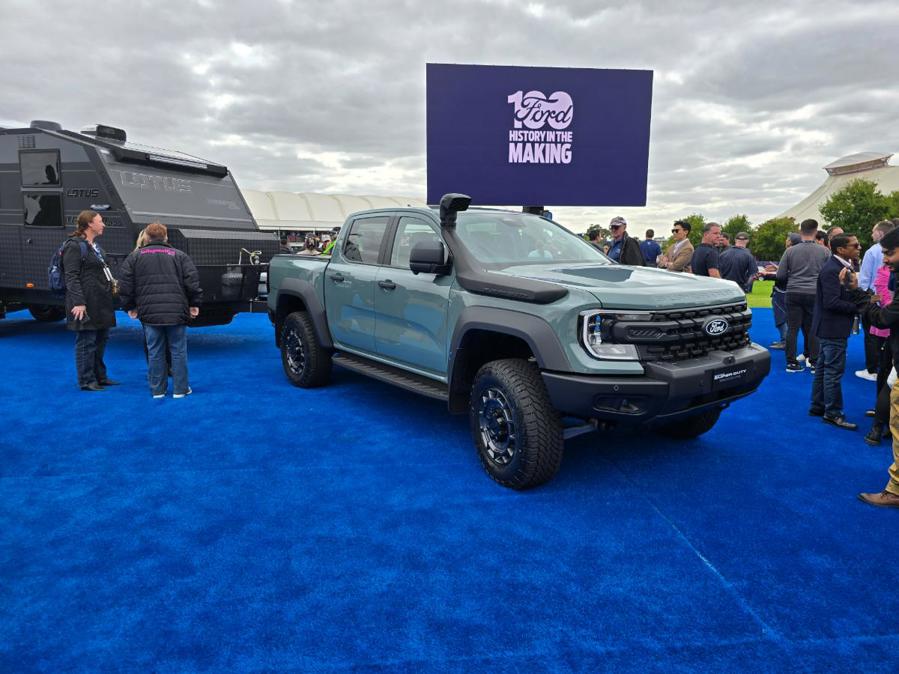
But despite the high-profile guests and even higher-profile Ford family members present, there was one very clear star of the show, and that was the Ford Ranger Super Duty.
And it was very clear that Ford fully expected the reaction it got when it revealed the first Ford truck to wear the Super Duty name outside the F-Series family at the end of the event, as the Australian-engineered tough truck significantly elevates the capabilities and design of the standard - and incredibly popular - Ford Ranger.
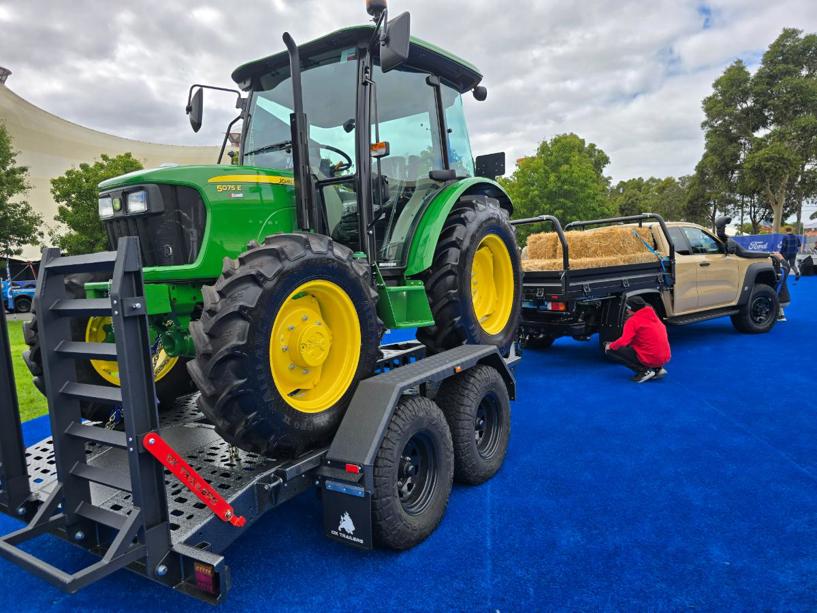
Development on the Super Duty version of New Zealand’s top-selling vehicle of any kind began back in 2019, with head of Ford Design Todd Willing saying that consultation with fleet managers showed that a gap existed in the market for a “tougher, more capable work-oriented version of the Ranger.”
“They told us about the heavy-duty medium pick-up space and how there just wasn’t anything they wanted,” said Willing.
“This set our team on a path to digging deeper, meeting with more than 50 companies and public services to truly live the life of these customers to understand their specific needs.”
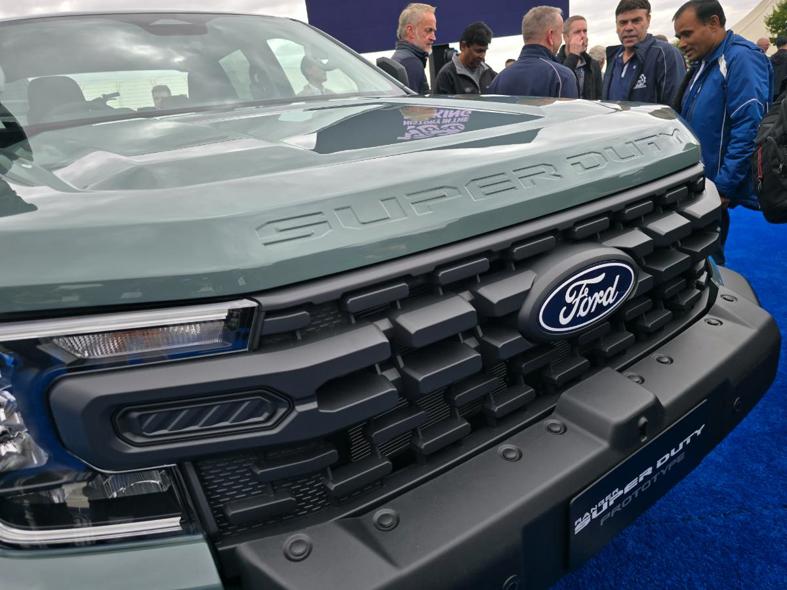
The Super Duty is notably larger than the standard Ranger, comparable in size to the Ranger Raptor in height and width, with the expanded footprint contributing to its enhanced capabilities, while visual features unique to the Super Duty include a new bonnet with chamfered edges and a stamped "SUPER DUTY" badge, while a new grille has an "open-weave mesh" design intended to improve airflow and engine cooling as well as differentiate it from the standard Ranger.
The Super Duty also sports a chunky steel front bumper with integrated accessory mounts, and its flared guards are more squared off compared to the Ranger Raptor, accommodating the wider wheel track and offering greater wheel articulation, while significantly larger, taller wing mirrors improve visibility when towing.
Another significant upgrade is the adoption of eight-stud wheel hubs from the F-Series Super Duty, necessary to handle the increased weight the Ranger Super Duty is capable of hauling. These are fitted with 18-inch steel wheels with 33-inch General Grabber all-terrain tires.
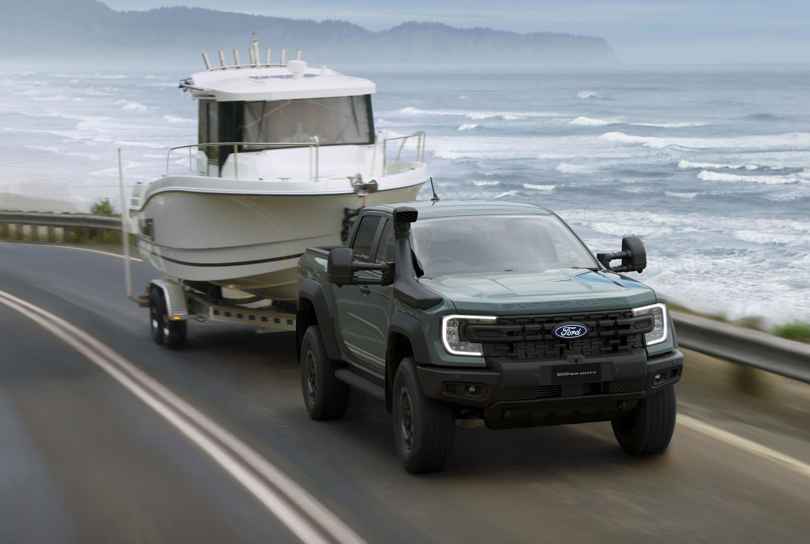
And that increased weight the Super Duty can haul? Yeah, that’s impressive - the Super Duty has a braked towing capacity of 4500kg, or 1000kg more than the standard Ranger (and pretty much every other one-tonne ute on sale today), while it boasts a Gross Vehicle Mass (the total weight of the vehicle, its occupants and any cargo) of 4500kg and a Gross Combined Mass (the GVM plus the weight of whatever it is towing) of a staggering 8000kg.
Ford hasn’t revealed the Ranger Super Duty’s kerb weight yet, but the standard Ranger weighs between 1873kg (2WD single cab-chassis) and 2400kg (4WD double cab Wildtrak V6), while the Raptor tops the lot at 2479kg thanks to its extensive re-engineering, so it would seem likely that the even-more-re-engineered Super Duty will top 2500kg, meaning it could theoretically still handle up to 2000kg in the tray. It probably won’t, but it could, and it does mean that it will almost certainly be able to carry significantly more in its tray than a standard Ranger.
Ford says Ranger’s chassis has been significantly re-engineered for the Super Duty, with the company calling it “essentially all-new”. Thicker steel, stronger welds, and more crossmembers all provide increased strength and load-carrying capacity.
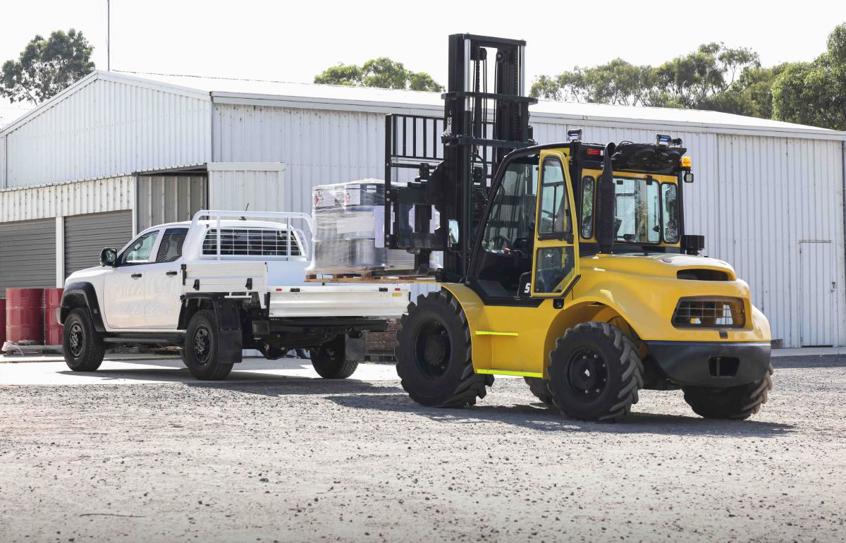
The front differential is modified from the Bronco Raptor, while the rear differential is a new heavy-duty unit that Ford describes as the "biggest and strongest to ever be fitted to a production Ranger". Both front and rear locking differentials are standard.
Ford says that the Super Duty’s suspension components, including control arms and knuckles, are “larger and more robust” than those found in the Raptor, while the leaf springs are also significantly thicker, and suspension mounts and box mount brackets have been reinforced.
But what of the engine that is tasked with dragging all this drastically increased weight around? Unexpectedly, the Super Duty is powered by a retuned version of the Ranger’s 3.0-litre turbo-diesel V6 engine that has been calibrated for heavy-duty emissions standards and is Euro 6.2 compliant. The 10-speed automatic transmission remains but also with revised tuning to handle the increased payload. No power or torque figures have been revealed yet, however.
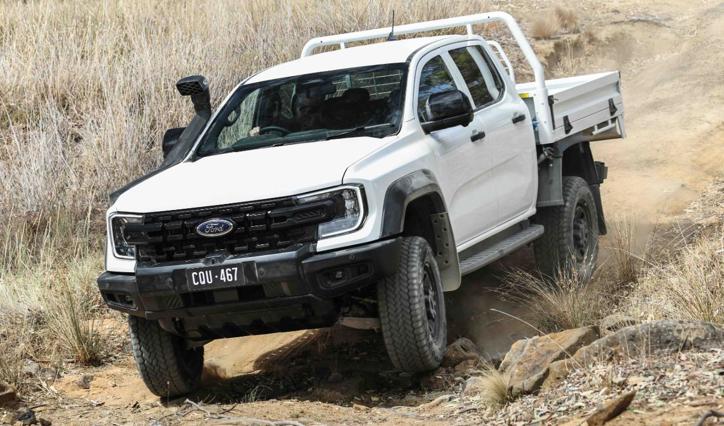
Other significant upgrades include a larger 130-litre fuel tank that Ford says could potentially offer a range of more than 1000km (presumably without maxing out those remarkable load hauling capacities) and is protected by a thick steel underbody protection, which also covers the engine, transmission, front differential and transfer case.
The cooling system has been upgraded with a larger, more powerful radiator fan, while Ford also says the Super Duty features upgraded brakes to manage its increased weight and towing capacity, but didn’t go into detail about this.
One unique new feature the Super Duty includes is a set of onboard scales that use sensors in the suspension to estimate the payload in the tray, which is then displayed on the infotainment screen. Given the extreme weights the Super Duty will likely be able to handle on its tray, this seems a very sensible inclusion.
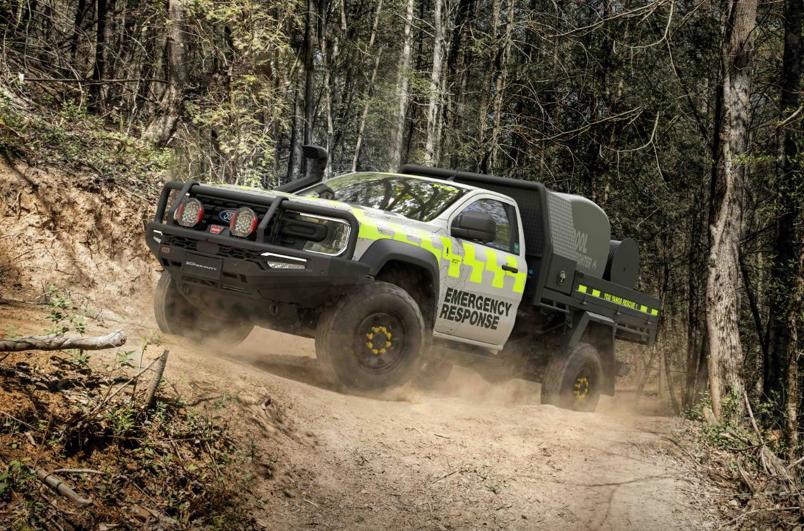
The onboard weighing system compliments Ford’s Smart Hitch system that Ford says helps drivers “better understand the weight on their vehicle’s tow ball and how to adjust the load in the trailer to ensure optimum load distribution and avoid under or overloading the tow ball”.
On the inside, the Super Duty is largely unchanged from the standard Ranger, however there are a few key differences aimed at making the heavy duty ute more appealing to fleets and commercial buyers, including a fully vinyl floor for easy cleaning, as opposed to the Ranger’s carpeting.
What initially appears to be a pop-out cupholder next to the driver’s side of the glovebox is in fact a new mounting point. Bolted directly to the chassis, the mounting point is for securely attaching laptops or other devices, and provides a rigid mount catering to work applications.
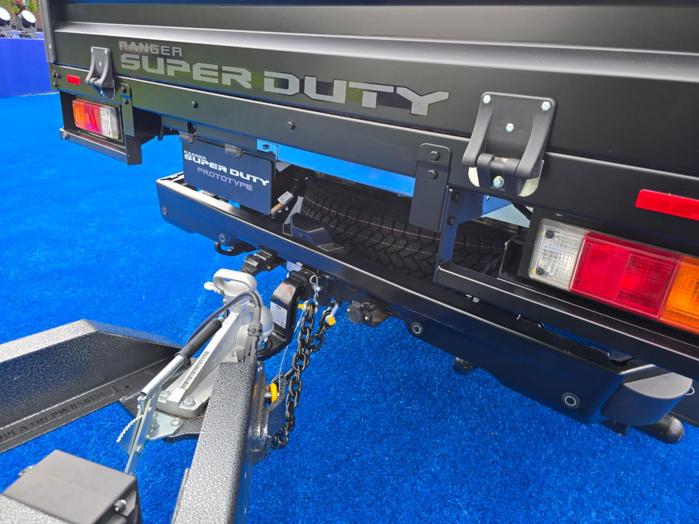
The full suite of Ford's advanced driver assistance systems (ADAS) will be included on every Super Duty model, including - for the first time - cab-chassis models. Traditionally cab-chassis utes have had to miss out on advanced features that utilise rear sensors due to the lack of rear bodywork to house them.
To get around this issue Ford has created what it calls a “technology bar” that is specifically designed to mount the necessary sensors and cameras required for the ADAS features to function even the more utilitarian cab-chassis versions.
The Ranger Super Duty will initially be available as a single cab-chassis, super cab-chassis and double cab-chassis variants when it launches in 2026, while a double cab wellside pick up variant will arrive later that year.

A higher-spec XLT version of the double cab models (cab-chassis and wellside) will also be available mid-2026 and will feature unique alloy wheels and “touring-focused upgrades” for those who “need refined long-distance capability” as well as the Super Duty’s other extreme capabilities.
Ford says more detailed technical information and pricing will be revealed closer to its 2026 launch, but we wouldn’t expect it to be cheap; the V6-powered Wildtrak (currently the only diesel V6 model offered in NZ) is $84,990 and while the Super Duty won’t have the Wildtrak’s level of equipment, the extremely extensive re-engineering that has gone into it won’t come cheap, so we wouldn’t expect much change out of $100k. If any.
But given the Ranger Super Duty’s only real competitors for load hauling are large American trucks like the Ram 1500 (which starts at $164,990) and the Chevrolet Silverado (which starts at $146,500), even getting the Super Duty under (or even just close to) $100,000 in New Zealand will be a major coup for Ford in the heavy-duty segment.

